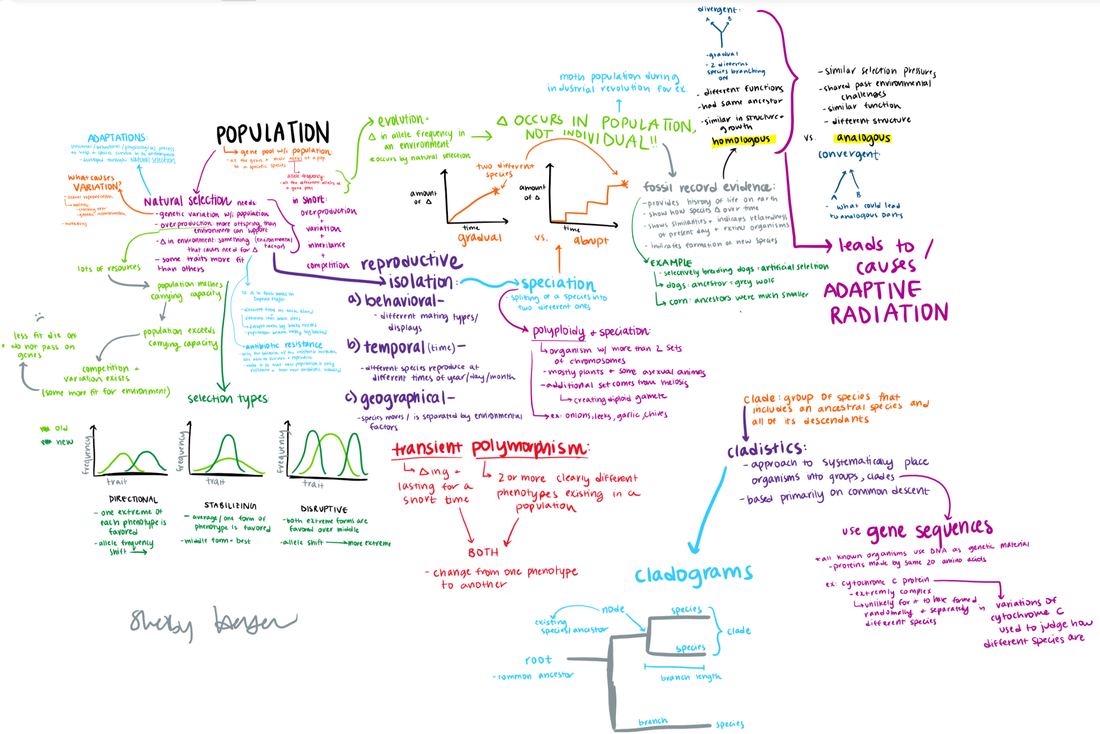Evolution & Biodiversity
After touring the Galapagos Islands on the HMS Beagle and observing the variety of plant and animal species living on the islands, Charles Darwin spent years analyzing the information and data he collected throughout his voyage. From his observations he realized that, through genetic variation, competition, and changing environments, species can change over time. He explained this process as natural selection in which organisms best fit for their environment survive to pass on their successful genes. Natural selection is the driving force for evolution (the allele frequency change within a species) and the examination of this unit. We will examine Darwin's explanation as well as look at how to calculate allele frequency changes and causes of these change with multiple examples found in nature.
Evolution Standards
Assignments:
|
ResourcesLab Standards Explained
Evolution, Sympatric Allopatric Comic Evolution Quizlet Set Natural Selection & Evolution:
Hardy-Weinberg Resources: Speciation
Crash Course Evolution Videos Shelby Unit Summary
The most dangerous organism on the planet |
Notes & Lectures:
5.1 Evolution
5.2 Natural Selection |
5.4 Cladistics10.3 Gene Pools & Speciation |

